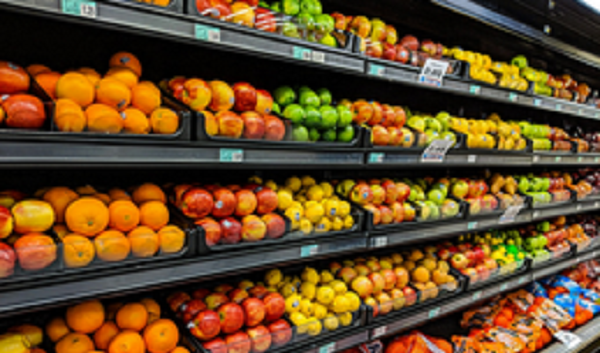Report finds Canadians more anxious about food affordability and more likely to buy local
A new report indicates Canadians have increased anxiety around food affordability and are now more likely to buy local.
The Spring 2025 Canadian Food Sentiment Index released by the Agri-Food Analytics Lab at Dalhousie University in Halifax provides insight into Canadians’ “shifting attitudes toward food prices, values, behaviors, and trust in food systems.”
The reports are based on an online survey of about 3,000 Canadians across all provinces and territories, administered by Caddle, that occurs every six months. The most recent report was conducted in March.
“By asking the same questions across each cycle, the report tracks trends and shifts in consumer sentiment providing consistent and meaningful data,” reads the report.
The report indicates food is the number one concern when it comes to inflation and Canadians are now buying less food per person compared to a year ago.
“There is a clear shift in consumer sentiment toward expecting higher food price inflation in Spring 2025,” reads the report.
“While moderate inflation expectations (2 – 4 %) declined, a growing number of Canadians now anticipate double-digit food inflation, suggesting rising concerns about affordability and economic pressures in the months ahead.”
Despite inflation concerns, the report suggests people are not using cost saving measures like coupons, choosing plant-based proteins, and switching stores as often, which is attributed to consumers “reaching their limit on frugality.” However, choosing store brands and buying in bulk is on the rise.
“These results might indicate that many consumers have already adopted frugal behaviours in response to rising food prices and had already reached their limit, indicating a strategic rebalancing of household budgets,” reads the report.
The number of Canadians who say they “always” or “often” buy local foods has gone up by 10 percentage points to 43.5 per cent.
“Younger Canadians (Gen Z) are leading this charge, with more than half regularly purchasing local,” reads the report.
“People are very focused on other issues, of course our country’s sovereignty, supporting local business appear to be incredibly important for Canadians right now,” says Sylvain Charlebois, with the Dalhousie University Agri-Food Analytics Lab.
While affordability remains the top consideration when purchasing food, the survey indicates nutrition and taste are on the rise, as well as restaurant spending.
“Even just from wintertime until now, like I said with the cruise ships and with the nice weather coming out we are seeing an increase with people coming through the door, once it hits lunch time it’s like a circus in here nonstop,” says Claude Moulaison, Arthurs Urban Market general manager.
“We have seen an increase in our customer counts, we have seen an increase in local products being purchased.”
Seventy-five per cent of Atlantic Canadians supported removing sales taxes on all food items. The region showed the highest amount of support for the idea, while Quebec was least in favour at 54.2 per cent.
When it comes to trust in food institutions and regulatory bodies, there has been an overall gain in the last six months, especially when it comes to independent grocers:
- independent grocers: +0.47 (from 2.89 to 3.36)
- major grocers: +0.33 (from 2.80 to 3.13)
- Canadian food manufacturers: +0.30 (from 3.26 to 3.56)
- Canadian Food Inspection Agency: +0.24 (from 3.54 to 3.78)
- Agriculture and Agri-Food Canada: +0.22 (from 3.52 to 3.74)
- Canadian farmers: +0.21 (from 3.69 to 3.90)
- Health Canada: +0.21 (from 3.59 to 3.80)
- merchants at farmers markets: +0.21 from (3.38 to 3.59)
“The food inflation storm over the last couple of years has actually pushed people to look beyond their regular grocery stores. They are discovering new stores, independent grocers mostly, and if you look at the report, independent grocers are much more trusted now than ever before,” says Charlebois.
“Household items and utilities show a decline in perceived inflation from Fall to Spring, suggesting slight easing in those categories or shifting consumer focus,” reads the report.
One-third of respondents reported feeling like categories such as transportation, entertainment and leisure, and housing had stable prices.
Overall, the report suggests people have perceived price increases across all categories and “price decreases remain relatively rare.”
This article was first reported by CTV News














